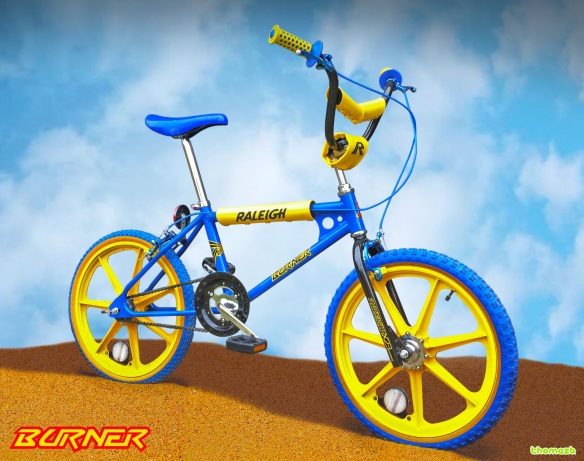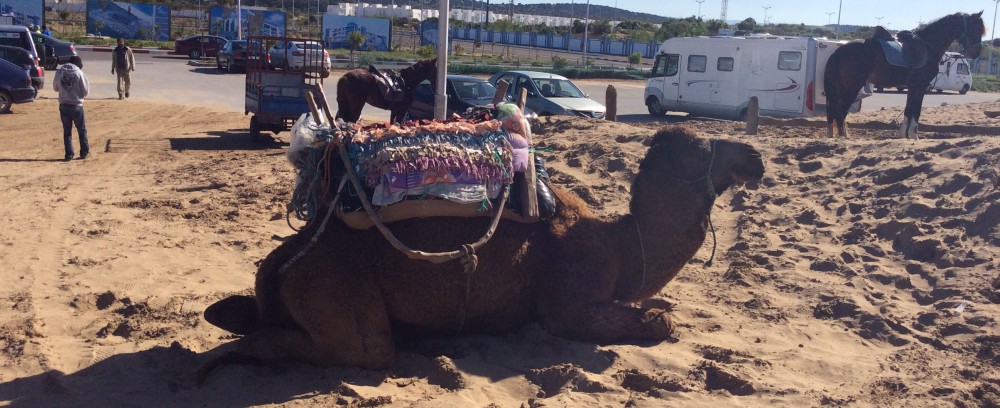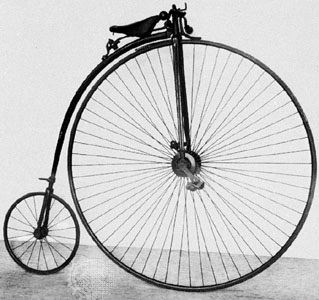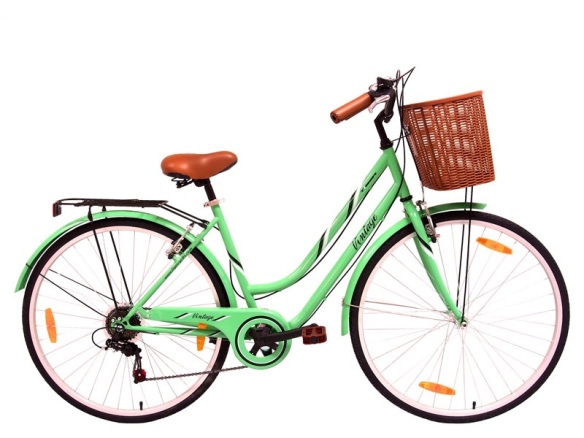We all want a new bike all of the time. Even when we get a new bike, we want another one. The solution is to custom design your own bike. By doing so your bike will be personal to you and one of a kind. It will mean something. This is what I did and it worked perfectly for me.
 A bike retailer will supply everything for you and then build it. Be sure you’re getting the right type of advice, not just what the retailer wants to sell you. This is a great way to start, but you could custom design yourself. You need to decide on what components you want, but first you have to decide on the material of the frame and the geometry of the frame. This is easier than it sounds. If the bike is, for road and light off road then consider aluminium or steel. Aluminium is generally more expensive and lighter. If it’s likely the bike will ride in Asia on poorly paved roads with potholes, then steal is really the only option. I would opt against suspension and go for hardtail. Suspension requires maintainance and if your like me, rubbish at it, then give it a wide berth. If you’re adamant you want suspension, lock out is no longer an option. The best you can hope for is potential lockout. This gives a minimum travel of 80mm and a maximum of 100mm. Before deciding on your frame, make sure it is capable of taking the front suspension of your choice. Bare in mind, suspension might offer more comfort but it carries more weight. Another reason for choosing steal, is that it is better for carrying weight, your luggage and your fat gut!
A bike retailer will supply everything for you and then build it. Be sure you’re getting the right type of advice, not just what the retailer wants to sell you. This is a great way to start, but you could custom design yourself. You need to decide on what components you want, but first you have to decide on the material of the frame and the geometry of the frame. This is easier than it sounds. If the bike is, for road and light off road then consider aluminium or steel. Aluminium is generally more expensive and lighter. If it’s likely the bike will ride in Asia on poorly paved roads with potholes, then steal is really the only option. I would opt against suspension and go for hardtail. Suspension requires maintainance and if your like me, rubbish at it, then give it a wide berth. If you’re adamant you want suspension, lock out is no longer an option. The best you can hope for is potential lockout. This gives a minimum travel of 80mm and a maximum of 100mm. Before deciding on your frame, make sure it is capable of taking the front suspension of your choice. Bare in mind, suspension might offer more comfort but it carries more weight. Another reason for choosing steal, is that it is better for carrying weight, your luggage and your fat gut!
To decide on the geometry of the frame, go and test ride loads of bike at a retailer and opt for the one that falls within your budget and offers the most comfort. Once this has been decided, ask the retailer if he can supply just the frame or just the frame and forks? If yes, great, get a price. Then ring around loads of other retailers and buy off the guy who gives the best deal. If not then contact the manufacturer directly. If this fails, there are plenty of small companies on the web that offer bespoke made frames. You can supply them with the manufacturers measurements and obtain a price. A benefit of choosing your frame this way, is that you decide on the colour scheme. Be sure if you take this option, to have the frame powder coated. I chose the manufacturer Surly. I liked the geometry and they allowed me to have a two tone frame at no extra cost. I constantly grumble at having no suspension, but I do know the hardtail makes sense for me. It’s lighter and my forks are trouble free.
The next choices to be made are, what rims, what tyres and what inner tubes? Spend as much as you can on the rims and then borrow some cash from your Dad and buy better ones. Compliment a decent rims with a good quality set of spokes, then chose chrome or black. Always remember to forget paying your ‘old fella’ back! Tyres can be a nightmare because we all want the best grip, the best puncture protection and the lightest weight. Unfortunately this option isn’t available. To keep it simple, can you replace an inner tube on the roadside comfortably and relatively quickly? If yes then I’d personally look to save some weight on the tyres. Be sure to check online reviews and statistics for rolling road performance. There’s little point in buying a lighter tyre if it doesn’t roll well. The weight saving will be lost with the extra force required. What width of tyre is neccessary? This depends on the terrain. The largest width is 40mm which will give very good stability on loose ground. It’s likely the roll of the tyre will be poorer because there is more rubber on the road, resulting in harder pedalling. An inner tube will largely be decided by the type of tyre selected. For example, if weight isn’t a consideration, buy the best tube that offers the best protection. Some of the best tyres that offer the best puncture protection, do get flats. Practice getting these tyres on and off the rim. After spending hours of time without success and bleeding finger tips, either watch a You a Tube how to video or buy a different tyre.
Gearing and crank. Shimano, Campagnolo or Rohloff are the main options? Shimano and Campagnolo offer the same characteristics by way of derailleur and rear cassette. Rohloff offer something relatively new. The gearing mechanism is in a bath of oil inside the rear hub. The company promotes heavily, the lack of maintainance and from the reports Ive read, this statement is accurate. Before deciding, see how much money you’ve got in your pocket? If you haven’t got an extra £750, then your choice is made for you. Secondary, where are you likely to be riding, Europe or similar? Rohloff is an option. Consider this though. You’re in the middle of Timbuktu and something goes wrong. How long are you going to have to wait, until a new mechanism arrives by post? Then finding somebody locally to administer the repair is very doubtful. I think you’re running out of options. In remote and undeveloped countries, Rohloff is a resounding no-no. So, Shimano or Campagnolo? It’s a bit like Beamer or Merc this one? I’ve had both and prefer higher end Shimano. It’s quite easy, the more you spend, the smoother the change, the greater longevity and lighter weight. Choosing a chain is a simple consideration. The lighter the chain, the weaker it is, ’nuff said’. The rear cassette is largely determined by the amount of teeth you want per cog and the determining factor here is, your level of fitness when it comes to steep hills and mountain climbs.
Now brakes, how do you want to stop? There are more choices now and more options within those choices than ever before. I’m going to break it all down using just two elements of criteria. Safety and maintainance. Disc brakes will always outperform rim brakes, however rim brakes are easier to maintain, there is less to go wrong. For me, that isn’t justification to forego an element of safety. I’ve used a rim brake whilst riding a Bianchi Intenso road bike. I was going down a mountain road in the Picos de Europa mountain range in Cantabria, Spain. The conditions were thick fog and pouring rain. It was impossible to stop the bike completely. I had to ride into the bank of the mountain. And so my advice is a disc brake over a rim brake, based upon my experience. So, now it’s the choice of a mechanical disc brake or a hydraulic one. For easier maintainance I’d opt for mechanical. Set a budget, do not go cheap on your brakes. Once you have decided on your budget, take fifty percent of it and add it to the initial amount. That’s how much and how important your brakes are.
Pedals, so much choice. What are the choices for going on tour? A twenty quid pair of rubber blocks that weigh a ton, the Shimano SPD system and mountain bike pedals with studs. Don’t go for the cheaper option, they’re not safe, you’ll be slipping off them every time there’s a bit of rain or you’re going up hill. The SPD system is very popular, but if you’re going off road and hoping to be achieving some speed, then you could come very unstuck and fall off. Your shoe is fixed into the pedal, similar to that of a cleat. If you need to get your foot down quickly for some stability, the chances are you won’t do it in time. You’re gonna take a tumble. The best option and this is from experience, is to go for a mountain bike lightweight pedal that has metal studs around the perimeters of the pedals. Be sure to buy a cool pair of trainers, something like Vans or Airwalk. These have a rubber sole that is soft enough for the spikes to grip very well but also strong enough to last. Eventually you will end up with holes in the rubber and that’s what you want. That’s where you’re grip comes from. I bought a pair made out of Magnesium, they were about £80, and worth every penny.
A few other smaller items that can, and will offer greater durability, a better biking experience and a lighter bike. Upgrades to the hubs, bottom bracket, handlebar stem and seat post will all do this and in the whole scope of overall cost, it doesn’t cost a fortune more.
Handlebars, seats and grips are very much a personal preference.
Mudguards are for girls!
Did I mention buying off the peg? Don’t bother. The manufacturer will create a huge selling point, like something innovative, that we only have the developers word for it that it is good. There will be ‘so called’ independent reviews by bike magazines and so on… Have you ever read a review where someone gets something for nothing? It never reads bad! Another example would be, let’s say, buying a fully carbon bike for under £1500. The majority of cost has been spent on the carbon, leaving little left for the other parts that make up the bike. These other parts have to be inferior for the retail cost to be £1500. OK, so you want to spend £1500. This will get you a good initial set up, with what is likely to be, a steel off the peg frame with your choice of the remainder of the parts. By spending the bulk of the money in the right areas, you have the option at a later stage to upgrade certain parts.
If you want help or just some guidance on buying or building a bike, then get in touch by using the contact tab on the homepage.


